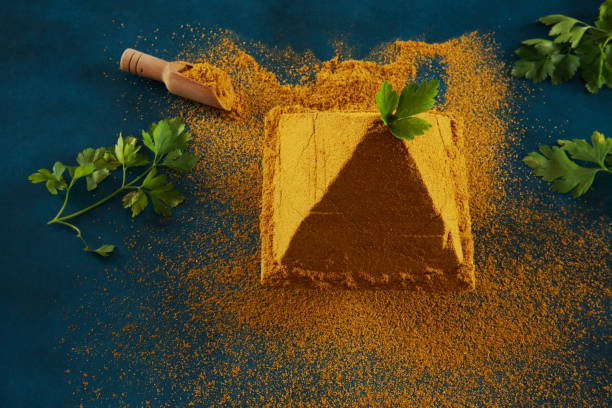Asafoetida powder, often known as hing powder, is a common folk remedy for a variety of ailments and a flavoring agent for food in many regions of the world. With approximately 170 species, ferula plants are extensively dispersed throughout central Asia, especially in west Afghanistan, Iraq, Turkey, and eastern Iran. They are also found in Europe and North Africa. Asafoetida is referred to as Hing or Hingu in India.
When ferula plants are four to five years old, they grow huge taproots, or carrot-shaped roots, that are about 15 cm in diameter at the crown, and it is from these that asafoetida is extracted. Asafoetida has a strong, lingering, sulfurous smell. Its smell is comparable to that of garlic, onion, and meat, which is why it has become a staple of Indian cooking. The Latin term “ferula” means “vehicle” or “carrier.” Foetidus means “smelling,” and Asa is Latinized from the Farsi
word asa, which means “resin.”
How to Use Hing in Cooking
Hing is frequently used in vegetable dishes such as dal and lentil curries when combined with turmeric. Hing can be used to counteract overly sweet, sour, salty, or spicy dishes. Pickling uses it as an agent as well.
Because of its digestive qualities, hing is frequently utilized in Indian cookery. It is added to foods that are considered to be gaseous or gas-producing, including beans and curries, to aid with digestion. Yogic guidelines state that eating it alongside onions and garlic might cause lethargy, so avoid doing so. In addition to hing, Cumin seeds are also a useful remedy for indigestion.
Asafoetida uses:
It relieves constipation, bloating, and flatulence. Due to its carminative qualities, asafoetida aids in the removal of gas from the intestines.
Anti-inflammatory: Asafoetida is helpful in lowering inflammation in the body because of its anti-inflammatory qualities.
Antibacterial: Asafoetida can aid in the defense against hazardous bacteria and fungus because of its antibacterial qualities.
Blood sugar regulation: Asafoetida is advantageous for diabetics because it has been demonstrated to have blood sugar-lowering properties. It can enhance glucose tolerance and assist control insulin levels.
